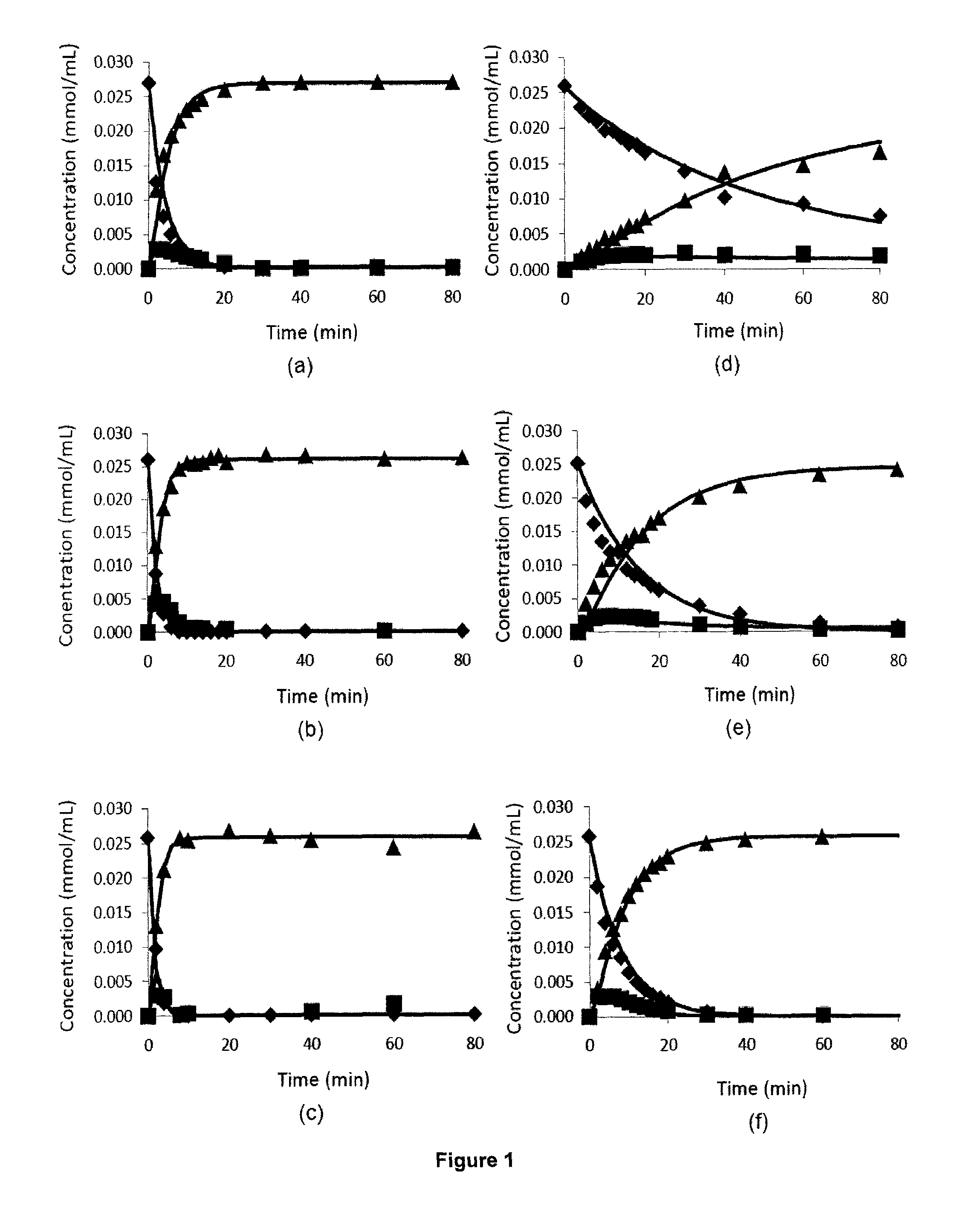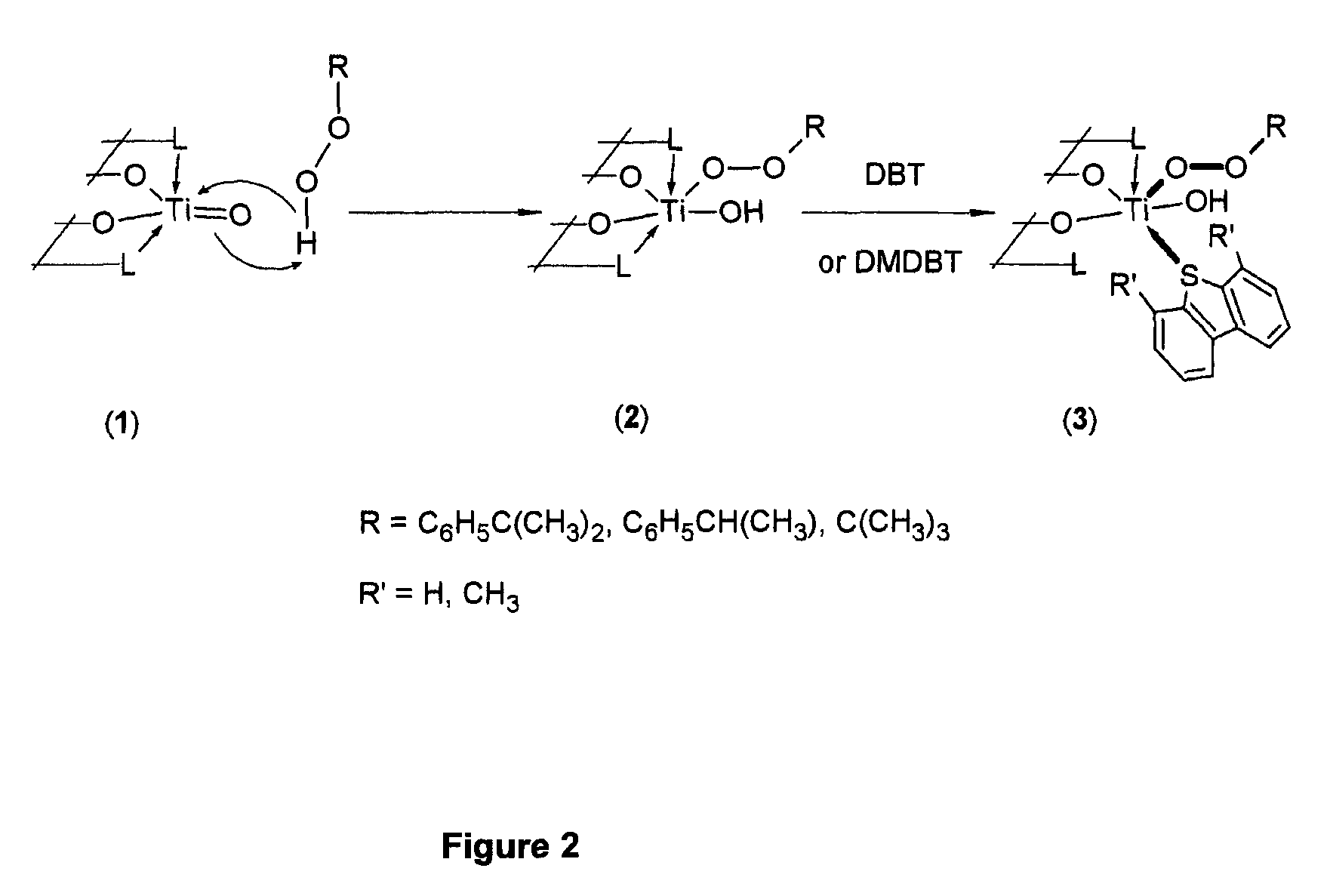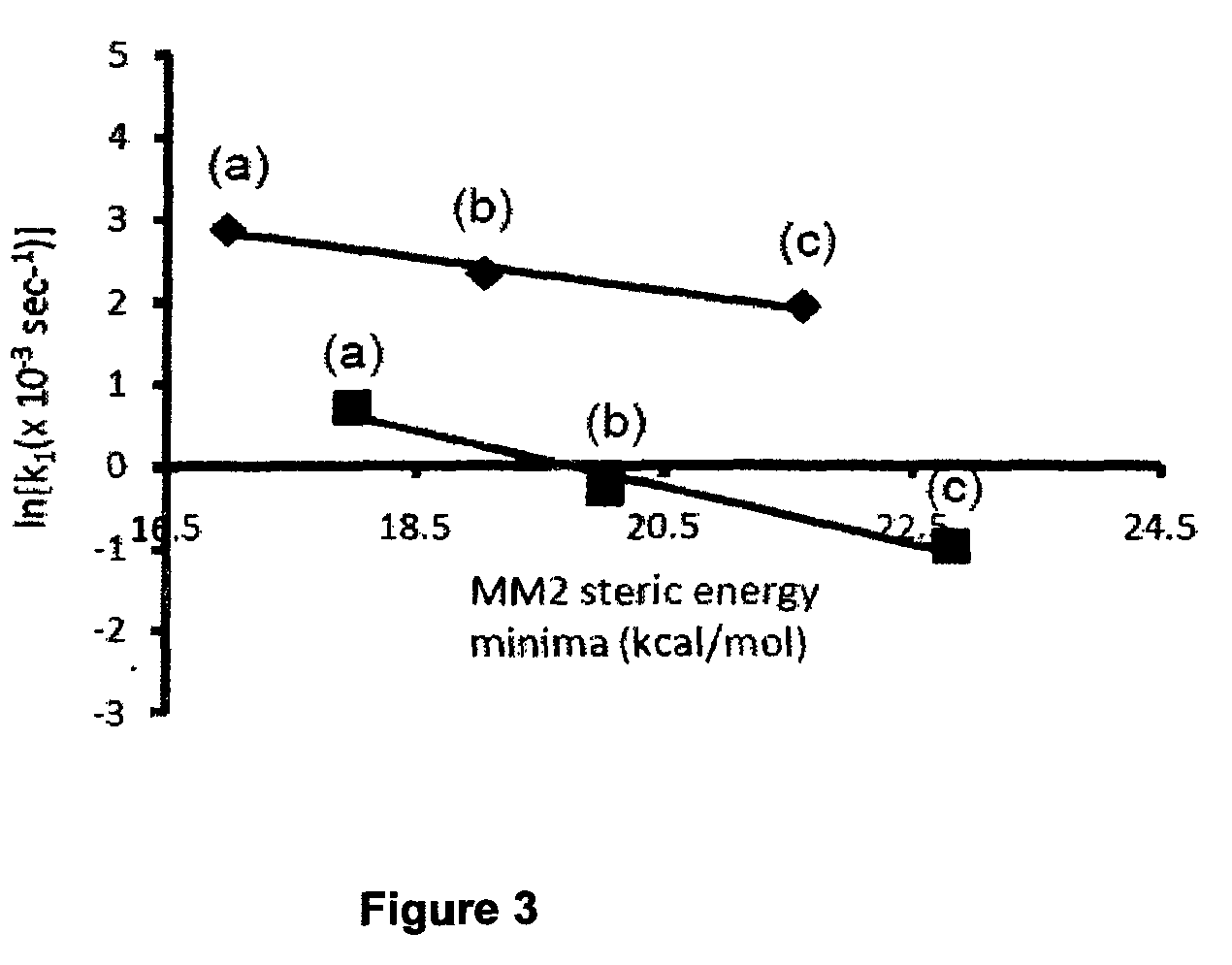Oxidative desulfurization using a titanium(IV) catalyst and organohydroperoxides
a technology of titanium and organohydroperoxide, which is applied in the direction of organic compounds/hydrides/coordination complexes, physical/chemical process catalysts, organic chemistry, etc., can solve the problems of hds technology being challenged, sulfur removal from heavier streams such as kerosene and gas oil is a greater challenge, and the bt's and alkylated derivatives are more difficult to hydro-treat than sulfides, disul
- Summary
- Abstract
- Description
- Claims
- Application Information
AI Technical Summary
Benefits of technology
Problems solved by technology
Method used
Image
Examples
example 1
Heterogeneous
poly[bis(glycerolato)(hydroxo)(ethylbenzylperoxo)titanium(IV) bisphenol A ester] Catalyst Preparation
[0035]Heterogeneous
[0036]poly[bis(glycerolato)(hydroxo)(ethylbenzylperoxo)titanium(IV) bisphenol A ester] catalyst is prepared by contacting a white poly[bis(glycerolato)oxotitanium(IV) bisphenol A ester] with about 50 wt % hydrogen peroxide solution in glacial acetic acid at about 23° C. to give the orange poly[bis(glycerolato)(hydroxo)(hydroperoxo)titanium(IV) bisphenol A ester]. The color change is an indication that poly[bis(glycerolato)oxotitanium(IV) bisphenol A ester] complex is peroxidated to poly[bis(glycerolato)(hydroxo)(hydroperoxo)titanium(IV) bisphenol A ester]. Poly[bis(glycerolato)(hydroxo)(hydroperoxo)titanium(IV) bisphenol A ester] is washed with glacial acetic acid and dried in the air. Poly[bis(glycerolato)(hydroxo)(hydroperoxo)titanium(IV) bisphenol A ester] is then contacted with toluene at about 85° C. for about 30 minutes and dried in air. This ste...
example 2
Heterogeneous
poly[bis(glycerolato)(hydroxo)(cumylperoxo)titanium(IV) bisphenol A ester] Catalyst Preparation
[0037]Heterogeneous poly[bis(glycerolato)(hydroxo)(cumylperoxo)titanium(IV) bisphenol A ester] catalyst is prepared by contacting a white poly[bis(glycerolato)oxotitanium(IV) bisphenol A ester] with about 50 wt % hydrogen peroxide solution in glacial acetic acid at about 23° C. to give the orange poly[bis(glycerolato)(hydroxo)(hydroperoxo)titanium(IV) bisphenol A ester]. The color change is an indication that poly[bis(glycerolato)oxotitanium(IV) bisphenol A ester] complex is peroxidated to poly[bis(glycerolato)(hydroxo)(hydroperoxo)titanium(IV) bisphenol A ester]. Poly[bis(glycerolato)(hydroxo)(hydroperoxo)titanium(IV) bisphenol A ester] is washed with glacial acetic acid and dried in the air. Poly[bis(glycerolato)(hydroxo)(hydroperoxo)titanium(IV) bisphenol A ester] is then contacted with toluene at about 85° C. for about 30 minutes and dried in air. This step is used to dest...
example 3
Heterogeneous poly[bis(glycerolato)(hydroxo)(t-butylperoxo)titanium(IV) bisphenol A ester] Catalyst Preparation
[0038]Heterogeneous poly[bis(glycerolato)(hydroxo)(t-butylperoxo)titanium(IV) bisphenol A ester] catalyst is prepared by contacting a white poly[bis(glycerolato)oxotitanium(IV) bisphenol A ester] with about 50 wt % hydrogen peroxide solution in glacial acetic acid at about 23° C. to give the orange poly[bis(glycerolato)(hydroxo)(hydroperoxo)titanium(IV) bisphenol A ester]. The color change is an indication that poly[bis(glycerolato)oxotitanium(IV) bisphenol A ester] complex is peroxidated to poly[bis(glycerolato)(hydroxo)(hydroperoxo)titanium(IV) bisphenol A ester]. Poly[bis(glycerolato)(hydroxo)(hydroperoxo)titanium(IV) bisphenol A ester] is washed with glacial acetic acid and dried in the air. Poly[bis(glycerolato)(hydroxo)(hydroperoxo)titanium(IV) bisphenol A ester] is then contacted with toluene at about 85° C. for about 30 minutes and dried in air. This step is used to...
PUM
| Property | Measurement | Unit |
|---|---|---|
| temperature | aaaaa | aaaaa |
| pressure | aaaaa | aaaaa |
| temperature | aaaaa | aaaaa |
Abstract
Description
Claims
Application Information
 Login to View More
Login to View More - R&D
- Intellectual Property
- Life Sciences
- Materials
- Tech Scout
- Unparalleled Data Quality
- Higher Quality Content
- 60% Fewer Hallucinations
Browse by: Latest US Patents, China's latest patents, Technical Efficacy Thesaurus, Application Domain, Technology Topic, Popular Technical Reports.
© 2025 PatSnap. All rights reserved.Legal|Privacy policy|Modern Slavery Act Transparency Statement|Sitemap|About US| Contact US: help@patsnap.com



